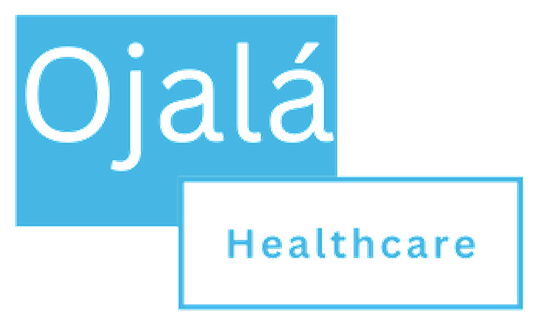Ojala Healthcare Group 100-Day Integration Plan
Our systematic approach to integrating newly acquired infusion therapy centers
Phase 1: Pre-Close Preparation
Due Diligence Completion
Finalize financial, operational, clinical, and legal due diligence. Identify key risks and opportunities for the integration plan.
Day 1 Planning
Develop detailed Day 1 checklist covering legal, operational, communication, and IT requirements for seamless transition.
Integration Team Formation
Assemble cross-functional integration team with representatives from operations, finance, clinical, HR, and IT. Assign integration lead.
Communication Strategy
Prepare communication plans for employees, patients, referral sources, payors, and vendors to ensure consistent messaging.
Phase 2: Immediate Integration
Day 1 Execution
Implement Day 1 plan including employee meetings, system access transfers, banking changes, and initial branding updates.
Clinical Assessment
Review clinical protocols, quality metrics, and patient satisfaction data. Identify opportunities for standardization.
Financial Integration
Implement financial reporting protocols, establish cash management procedures, and integrate accounting systems.
Staff Engagement
Conduct one-on-one meetings with key staff, implement retention plans for critical employees, and begin cultural integration.
Phase 3: Operational Alignment
Revenue Cycle Optimization
Implement standardized billing practices, review payor contracts, and identify opportunities for reimbursement improvement.
IT Systems Integration
Begin migration to platform EMR and practice management systems. Implement standardized reporting dashboards.
Supply Chain Integration
Transition to platform purchasing agreements, implement inventory management system, and standardize formulary.
Clinical Protocol Standardization
Implement platform clinical protocols while preserving appropriate local customization. Begin staff training on standard procedures.
Phase 4: Value Capture
Synergy Implementation
Execute identified cost-saving opportunities including administrative consolidation, vendor contract renegotiation, and operational efficiencies.
Performance Metrics
Establish KPI tracking system with regular reporting cadence. Implement performance improvement plans for underperforming areas.
Growth Initiatives
Implement referral source management program, expand service offerings, and develop marketing initiatives to drive organic growth.
Integration Assessment
Conduct comprehensive review of integration progress, identify remaining gaps, and develop plan for ongoing optimization.
Phase 5: Ongoing Optimization
Continuous Improvement
Implement ongoing operational excellence program with regular performance reviews and improvement initiatives.
Leadership Development
Implement leadership training and development programs to build bench strength and support future growth.
Best Practice Sharing
Establish platform-wide forums for sharing clinical and operational best practices across all locations.
Strategic Planning
Incorporate acquired center into platform strategic planning process and long-term growth initiatives.
Integration Performance Metrics
Average EBITDA Improvement
15-20%
Within First 12 Months
Revenue Cycle Improvement
10-15%
Collection Rate Increase
Supply Cost Reduction
8-12%
Through Group Purchasing
Staff Retention
90%+
Of Key Clinical Staff
Phase 1: Pre-Close Preparation
Due Diligence Completion
Finalize financial, operational, clinical, and legal due diligence. Identify key risks and opportunities for the integration plan.
Day 1 Planning
Develop detailed Day 1 checklist covering legal, operational, communication, and IT requirements for seamless transition.
Integration Team Formation
Assemble cross-functional integration team with representatives from operations, finance, clinical, HR, and IT. Assign integration lead.
Communication Strategy
Prepare communication plans for employees, patients, referral sources, payors, and vendors to ensure consistent messaging.
Phase 2: Immediate Integration
Day 1 Execution
Implement Day 1 plan including employee meetings, system access transfers, banking changes, and initial branding updates.
Clinical Assessment
Review clinical protocols, quality metrics, and patient satisfaction data. Identify opportunities for standardization.
Financial Integration
Implement financial reporting protocols, establish cash management procedures, and integrate accounting systems.
Staff Engagement
Conduct one-on-one meetings with key staff, implement retention plans for critical employees, and begin cultural integration.
Phase 3: Operational Alignment
Revenue Cycle Optimization
Implement standardized billing practices, review payor contracts, and identify opportunities for reimbursement improvement.
IT Systems Integration
Begin migration to platform EMR and practice management systems. Implement standardized reporting dashboards.
Supply Chain Integration
Transition to platform purchasing agreements, implement inventory management system, and standardize formulary.
Clinical Protocol Standardization
Implement platform clinical protocols while preserving appropriate local customization. Begin staff training on standard procedures.
Phase 4: Value Capture
Synergy Implementation
Execute identified cost-saving opportunities including administrative consolidation, vendor contract renegotiation, and operational efficiencies.
Performance Metrics
Establish KPI tracking system with regular reporting cadence. Implement performance improvement plans for underperforming areas.
Growth Initiatives
Implement referral source management program, expand service offerings, and develop marketing initiatives to drive organic growth.
Integration Assessment
Conduct comprehensive review of integration progress, identify remaining gaps, and develop plan for ongoing optimization.
Phase 5: Ongoing Optimization
Continuous Improvement
Implement ongoing operational excellence program with regular performance reviews and improvement initiatives.
Leadership Development
Implement leadership training and development programs to build bench strength and support future growth.
Best Practice Sharing
Establish platform-wide forums for sharing clinical and operational best practices across all locations.
Strategic Planning
Incorporate acquired center into platform strategic planning process and long-term growth initiatives.
Integration Performance Metrics
Average EBITDA Improvement
15-20%
Within First 12 Months
Revenue Cycle Improvement
10-15%
Collection Rate Increase
Supply Cost Reduction
8-12%
Through Group Purchasing
Staff Retention
90%+
Of Key Clinical Staff
